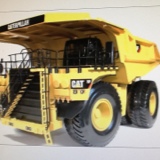Information
-
Audit Title
-
Client / Site
-
Conducted on
-
Prepared by
-
Names of Auditors
-
Name(s) of Employees and Supervisor being audited.
Employee Competencies
-
Employees can describe when fall protection is needed.
-
Employees know when fall protection is required when working from ladders.
-
Employees understand that in order to maintain continuous tie-off, they need to utilize two lanyards for some tasks as they reposition themselves.
-
Employees can describe suitable anchor points for tie-off in general terms.
-
Employees can describe beam straps, beam clamps, D-rings, and other similar engineered devices that can be used to create good anchor points and can describe how to acquire them.
-
Employees can describe the reasons for selecting the appropriate anchor point location to ensure they would not impact the ground prior to their lanyard being deployed.
-
Employees know the sites expectation on conditions that require tie-off (this am vary by site due to regulatory interpretation, but should generally be 4 foot unless there is an additional hazard at lower fall height.
-
Employees know when various lanyards are appropriate (e.g. Sala block is not appropriate for slow movement or fall restraint applications, rope lanyard is not appropriate for fall arrest, soft-stop, sala block, or similar energy dissipating device is required if free fall is possible)
-
Employees can demonstrate how to conduct a proper fall protection equipment inspection and know of the expectation to inspect prior to each use.
-
Employees can relate at least one prior conversation with coworkers where an uncertainty with fall protection was resolved through teamwork and collaboration.
-
Employees can relate at least one prior instance when a supervisor praised, coached or consulted with them regarding the use of fall protection.
-
Employees have recommended a suggestion for continuous improvement for their workforce that would eliminate the need for fall protection.
-
Employees can describe he appropriate actions they would take for the discovery of a damaged handrail or other permanent barrier that prevents falls.
Supervisor Competencies
-
Supervisors can describe how they trust but verify the following for their employees:
-
Employees conduct a proper fall protection equipment inspection and know the expectation to inspect prior to each use.
-
Employees know how to acquire beam straps, beam clamps, and other similar engineered devices that can be used to create good anchor points.
-
Employees use two lanyards when needed to maintain continuous tie off.
-
Employees select and use appropriate anchor points for tie off.
-
Employees select the proper anchor point height to ensure their lanyard will be effective.
-
Supervisors can describe at least one prior instance when they praised, coached or consulted with an employee regarding the use of fall protection.
-
Supervisors can describe at least one prior instance when a contractor was coached, praised or consulted regarding the use of fall protection.
-
Supervisors can describe a workplace improvement project for fall protection in their area that has recently been completed or is in progress.
-
Supervisors can describe the process to identify and correct damage to permanent fall barriers such as handrails.
Observation of Work Practices
-
Employees conduct a proper fall protection equipment inspection prior to use / equipment is in good condition.
-
Employees use two lanyards when necessary to maintain continuous tie off.
-
Employees use suitable anchor points for tie off.
-
Beam straps, beam clamps, D-rings and other similar engineered devices that can be used to create good anchor points.
-
Employees use appropriate anchor point locations to ensure they would not impact the ground prior to their lanyard being deployed.
-
Handrails and other fall barriers are in place and in sufficiently good condition to prevent falls from working surfaces.
-
Auditor(s) Signature
-
Revision 1.0 iCloud posted document is the controlled copy. 06/19/13







